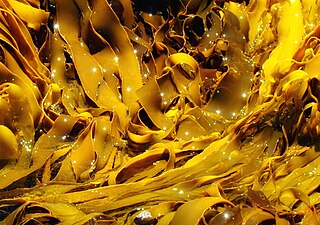
Phycology is the scientific study of algae. Also known as algology, phycology is a branch of life science.
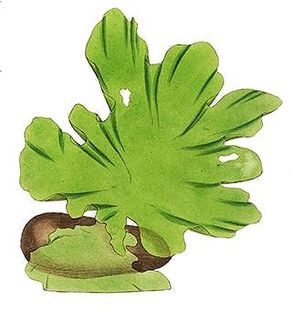
The sea lettuces comprise the genus Ulva, a group of edible green algae that is widely distributed along the coasts of the world's oceans. The type species within the genus Ulva is Ulva lactuca, lactuca being Latin for "lettuce". The genus also includes the species previously classified under the genus Enteromorpha, the former members of which are known under the common name green nori.
Cystophora is a genus of brown algae.

Cystoseira is a genus of brown algae in the order Fucales.

Turbinaria is a genus of brown algae (Phaeophyceae) found primarily in tropical marine waters. It generally grows on rocky substrates. In tropical Turbinaria species that are often preferentially consumed by herbivorous fishes and echinoids, there is a relatively low level of phenolics and tannins.

Bostrychia is a genus of filamentous red alga. Species may grow as epiphytes on other plants in salt marsh and mangrove habitats.

Rhodomelaceae is estimated to be the largest red algae family, with about 125 genera and over 700 species.

Chondrus is a genus of red algae containing 11 accepted species:
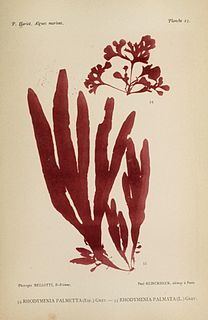
Rhodymenia is a genus of red algae, containing the following species:
Cystoseira crassipes is a species of seaweed native to northeast Asia.

Plocamium is a genus of red algae in the family Plocamiaceae. It contains around 40 species and has a cosmopolitan distribution in temperate seas. Plocamium has erect elliptical thalli that grow up to 50 cm (20 in) in length. They are bright red in color with strongly flattened delicately branching fronds that further divide into two to five smaller branchlets.

Laurencia is a genus of red algae that grow in temperate and tropical shore areas, in littoral to sublittoral habitats, at depths up to 65 m (213 ft).
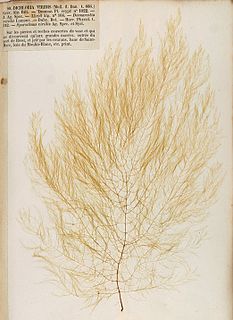
Desmarestia is a genus of brown algae found worldwide. It is also called acid weed, acidweed, oseille de mer, sea sorrel, ウルシグサ, stacheltang, mermaid's hair, landlady's wig, or gruagach. However, 'sea sorrel' can also specifically refer to Desmarestia viridis. Members of this genus can be either annual or perennial. Annual members of this genus store sulfuric acid in intracellular vacuoles. When exposed to air they release the acid, thereby destroying themselves and nearby seaweeds in the process. They are found in shallow intertidal zones.

The Seirococcaceae are a family of brown algae, containing five genera:

Ptilonia(Harvey) J. Agardh, 1863 is a genus of red algae in the family Bonnemaisoniaceae.
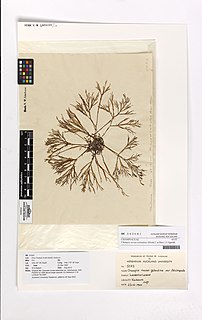
Champia is a genus of red algae in the family Champiaceae, first described in 1809 by Nicaise Auguste Desvaux














